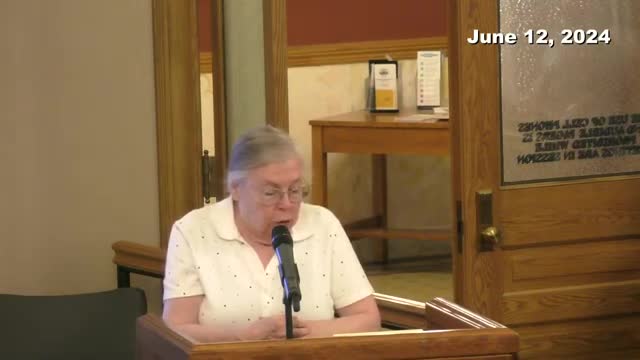Community rallies to preserve Abravanel Hall amid redevelopment plans
June 13, 2024 | Salt Lake City Planning Commission Meeting, Salt Lake City, Salt Lake County, Utah

This article was created by AI summarizing key points discussed. AI makes mistakes, so for full details and context, please refer to the video of the full meeting. Please report any errors so we can fix them. Report an error »

In a recent government meeting, community members voiced strong concerns regarding proposed zoning changes and developments in downtown Salt Lake City, particularly focusing on the preservation of Abravanel Hall and the implications of new signage and helipads.
Mercedes Smith, principal flutist of the Utah Symphony, emphasized the need to preserve Abravanel Hall, arguing that any renovations should maintain its acoustical integrity. She criticized plans that could lead to the demolition of the existing structure, which she believes serves as a vital cultural hub for the community. Smith also highlighted a troubling discrepancy regarding a proposal for helipads, which she claimed was initially included in a proposal by Smith Entertainment Group but later denied as a \"copy and paste error.\"
Daniel Haas, pastor at the Japanese Church of Christ, expressed concerns about the potential displacement of the Japantown community, recalling past displacements linked to developments like the Salt Palace. He urged the commission to maintain height restrictions to protect the visibility and integrity of the Japantown area.
Robert McConnell, representing Smith Entertainment Group, acknowledged ongoing discussions about Abravanel Hall and clarified that the helipad proposal was intended for emergency use related to athletic events. He assured that a specific signage plan would be developed to address concerns about visual pollution from new advertisements.
Public comments also reflected a broader unease about the proposed changes, with many residents advocating for the preservation of green spaces and the existing character of the downtown area. Concerns were raised about the potential for increased noise pollution from helipads and the aesthetic impact of new signage on cultural landmarks.
The meeting concluded with a call for careful consideration of the downtown master plan, emphasizing the importance of a cohesive vision for urban development that respects the historical and cultural significance of existing structures. As discussions continue, community members remain vigilant about the future of their neighborhoods and the preservation of their cultural heritage.
Mercedes Smith, principal flutist of the Utah Symphony, emphasized the need to preserve Abravanel Hall, arguing that any renovations should maintain its acoustical integrity. She criticized plans that could lead to the demolition of the existing structure, which she believes serves as a vital cultural hub for the community. Smith also highlighted a troubling discrepancy regarding a proposal for helipads, which she claimed was initially included in a proposal by Smith Entertainment Group but later denied as a \"copy and paste error.\"
Daniel Haas, pastor at the Japanese Church of Christ, expressed concerns about the potential displacement of the Japantown community, recalling past displacements linked to developments like the Salt Palace. He urged the commission to maintain height restrictions to protect the visibility and integrity of the Japantown area.
Robert McConnell, representing Smith Entertainment Group, acknowledged ongoing discussions about Abravanel Hall and clarified that the helipad proposal was intended for emergency use related to athletic events. He assured that a specific signage plan would be developed to address concerns about visual pollution from new advertisements.
Public comments also reflected a broader unease about the proposed changes, with many residents advocating for the preservation of green spaces and the existing character of the downtown area. Concerns were raised about the potential for increased noise pollution from helipads and the aesthetic impact of new signage on cultural landmarks.
The meeting concluded with a call for careful consideration of the downtown master plan, emphasizing the importance of a cohesive vision for urban development that respects the historical and cultural significance of existing structures. As discussions continue, community members remain vigilant about the future of their neighborhoods and the preservation of their cultural heritage.
View full meeting
This article is based on a recent meeting—watch the full video and explore the complete transcript for deeper insights into the discussion.
View full meeting

